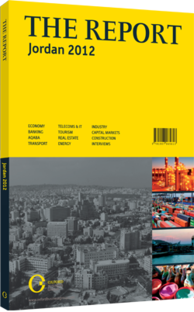OBG talks to Hatem Halawani, Chairman, Jordan Chamber of Industry (JCI)

Interview: Hatem Halawani
What is being done to facilitate low-interest lending to small and medium-sized enterprises (SMEs)?
HATEM HALAWANI: Total credit facilities extended by commercial banks in 2011 reached about JD15.8bn ($22.2bn), up 9.7% over 2010. However, only 14.5% of these facilities were directed to the industrial sector, and less than 5% of the industrial sector’s share reached SMEs. Moreover, the prime lending rate is still above 8%, which means the cost of SME borrowing exceeds 10%. This restrictive lending environment was reflected in the World Economic Forum’s “Global Competitiveness Report 2011:, which demonstrated that Jordan has one of the highest interest rate spreads in the region.
The JCI has urged policymakers to address this problem. One positive development in the last year was the programme launched by the government with the Overseas Private Investment Corporation (OPIC) to guarantee low-interest loans from commercial banks to SMEs. Whereas loans granted outside Amman will receive guarantees of 70% under this programme, loans given inside the capital will receive guarantees of 60%.
Meanwhile, the JCI has worked in partnership with the International Labour Organisation to create an SME technical support unit. Once operational in mid-2012, this unit will help SMEs to strengthen human resources capacity, identify and acquire new sources of funding, and find external markets for their products.
How do industrial production costs in Jordan compare to those in other Middle Eastern countries?
HALAWANI: The costs of industrial protection in Jordan are among the highest in the region. This is especially true after the Arab Spring uprisings, which led to a dramatic increase in the local price of electricity due to turmoil in Egypt. Moreover, the price of fuel oil sold to the industrial sector in Jordan is about 20 times higher than in Saudi Arabia, 12.5 times than in the UAE, four times higher than in Egypt, and 3.67 times higher than in Syria. Further, in 2011 the government increased the minimum wage by around 27% to reach JD190 ($267). In neighbouring countries, unlike in Jordan, the industrial sector is fully supported. Given that more than 90% of our exports are industrial exports, this lack of support erodes our competitive advantage.
Despite these obstacles, the sector posted strong growth numbers in 2011. Industry’s contribution to GDP was around 25%, and, overall, it contributed 40% to economic growth. That year saw industrial exports increase by 25.3%, to reach JD4.48bn ($6.3bn), with total exports to the Greater Arab Free Trade Area (GAFTA) increasing by 12.1%. In terms of employment, the sector provided jobs for over 231,000 workers, equivalent to 18% of the total labour force. Finally, the industrial sector received more than JD661.5m ($929.5m) in investment, constituting 63% of the national total.
What are the major growth markets in Jordan’s export profile going forward?
HALAWANI: Jordanian exports reach over 100 countries, but our main target market is the Arab world. Over the last two decades Jordanian exports to GAFTA members rose by 285%. In 2011 Arab nations received 47% of our industrial exports, followed by the US at 16% and the EU at 5.1%. Meanwhile, the mining sector accounted for 20% of total exports in 2011, followed by the garment and chemical industries (17%) and the engineering sector (15%).
Of course, free trade agreements (FTAs) play a key role in our export strategy. The Canada-Jordan FTA was signed in Amman in 2009. This FTA, which is the first Canada has signed with an Arab country, will boost bilateral trade and create new export opportunities for Jordanian goods in non-traditional markets.
Under the Jordan-Turkey FTA, industrial goods of Jordanian origin can enter the Turkish market exempted from Customs duties, with only a few exceptions. On the other hand, Jordanian Customs taxes on imported industrial goods from Turkey will be eliminated over a transitional period of eight years from 2011. In that year, our exports to Turkey increased by around 54.3%.
You have reached the limit of premium articles you can view for free.
Choose from the options below to purchase print or digital editions of our Reports. You can also purchase a website subscription giving you unlimited access to all of our Reports online for 12 months.
If you have already purchased this Report or have a website subscription, please login to continue.

